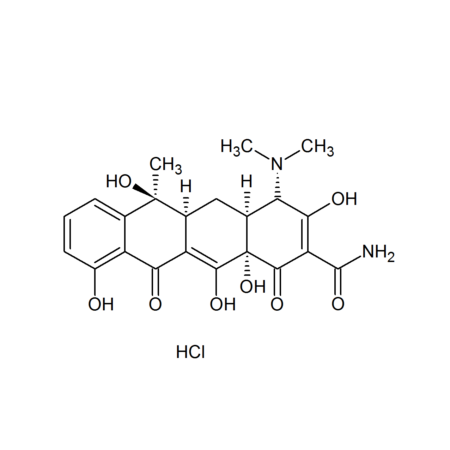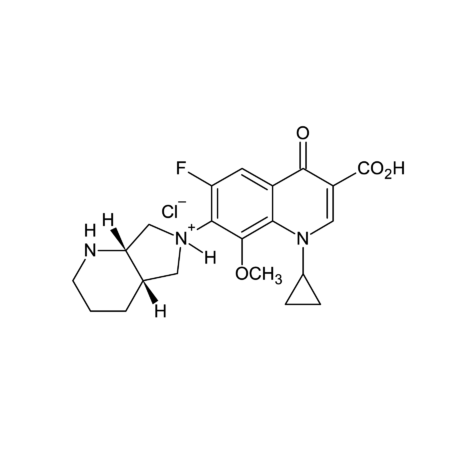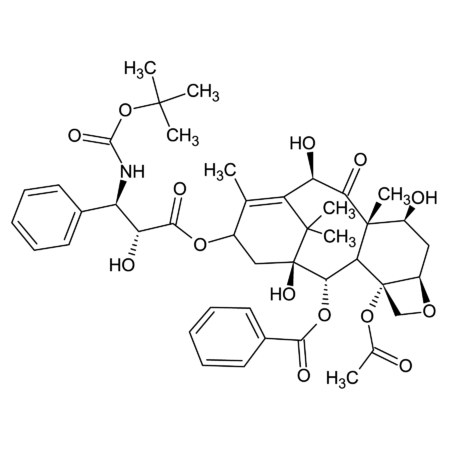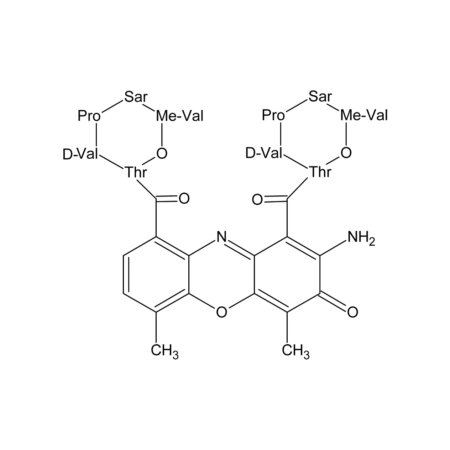Tetracycline hydrochloride
- SKU
- T0096
Category: Antibiotics
- Synonyms
- 2-Naphthacenecarboxamide
- 64-75-5
- CAS-Number
- C22H24N2O8 · HCl
- Molecular Formula
- 480.9
- Molecular Weight
Specifications
- Purity
- ≥99% (HPLC)
- Appearance
- Yellow to orange powder
- Identity
- 1H-NMR
Properties
- Solvents
- water (10 mg/ml), DMSO, methanol or 01 N HCl (10 mg/ml)
- Melting Point
- 220-223 °C (lit.)
- Optical Activity
- [α]20/D -253º, c = 0.5 in 0.1mol/L HCl
Downloads
- Safety Data Sheet
- CDX T0096 MSDS.pdf
- Shipping
- AMBIENT
- Short Term Storage
- +4°C
- Long Term Storage
- -20°C
- Handling Advice
- Protect from light and moisture.
- Use / Stability
- Stable for at least 2 years after receipt when stored at -20°C.
- Hazard statements
- H315-H319-H335
- Precautionary statements
- P261-P305 + P351 + P338
- GHS Symbol
- GHS07
- Signal word
- Warning
- Transportation
- Not dangerous goods
- Description
- Tetracycline is a broad-spectrum antibiotic that prevents bacterial growth by inhibiting protein synthesis. It binds to a single site in the 30S ribosomal subunit which prevents attachment of aminoacyl tRNA to the ribosomal acceptor site. It is used in cell biology as a selective agent in cell culture systems. Tetracycline is toxic to prokaryotic and eukaryotic cells and selects for cells harboring the bacterial tetR gene, which are resistant to the antibiotic.
- Smiles
- OC1=C(C(C2=C(O)[C@@](C(C(C(N)=O)=C(O)[C@H]3N(C)C)=O)(O)[C@@]3([H])C[C@]2([H])[C@@]4(O)C)=O)C4=CC=C1.Cl
- InChi Key
- XMEVHPAGJVLHIG-FMZCEJRJSA-N
- References
- (1) J. Degenkolb, et al.: Antimicrob. Agents. Chemother. 35, 1591 (1991) , (2) D.N. Wilson: Crit. Rev. Biochem. Mol. Biol. 44, 393 (2009)
- InChi
- InChI=1S/C22H24N2O8.ClH/c1-21(31)8-5-4-6-11(25)12(8)16(26)13-9(21)7-10-15(24(2)3)17(27)14(20(23)30)19(29)22(10,32)18(13)28
Tetracycline is a broad-spectrum antibiotic that prevents bacterial growth by inhibiting protein synthesis. It binds to a single site in the 30S ribosomal subunit which prevents attachment of aminoacyl tRNA to the ribosomal acceptor site. It is used in cell biology as a selective agent in cell culture systems. Tetracycline is toxic to prokaryotic and eukaryotic cells and selects for cells harboring the bacterial tetR gene, which are resistant to the antibiotic.







